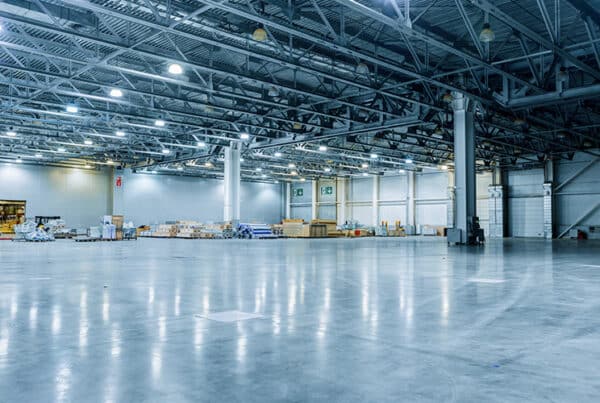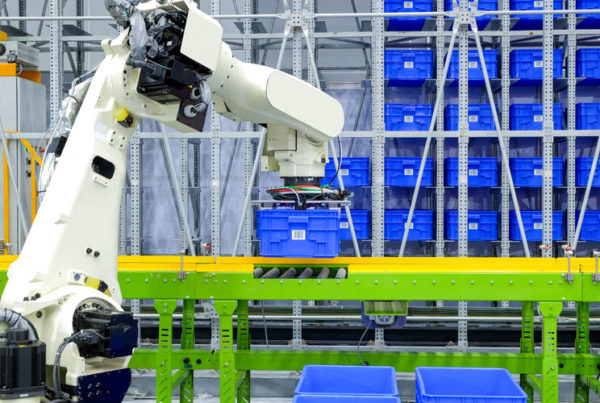Global eCommerce has touched nearly every aspect of modern life. No longer a luxury, it has become the single most important strategy for businesses to adopt in order to stay competitive and achieve real success.
It is, however, a hugely complex issue that raises many questions and forces difficult decisions. In this article, we look at the global eCommerce market in the new normal created by COVID-19 (with a particular focus on supply chains) and how organizations can rebuild and reinvent themselves in the wake of the pandemic.
How global eCommerce was affected in ’20/’21
The COVID-19 pandemic continues to disrupt and challenge global supply chains. Lockdowns and work shortages across the world have stopped or delayed the smooth passage of materials and finished goods. As a result, manufacturing and delivery of products have suffered.
However, the challenges posed by the pandemic are not new. COVID has only exposed and magnified existing weaknesses in systems and processes, catalyzing – not creating – the problems in the supply chain.
The global eCommerce market is projected to total as much as $5 trillion by the end of 2021 and is still growing, offering tremendous potential.
- In 2019, 6% of sales globally were made online. In 2021 that figure is 19.5%, a 43.4% increase.
- This figure is expected to reach 8% by 2024, a 60.3% increase in just five years.
Winners and losers of the global corporate performance race
COVID-19 opened existing fault lines in global corporate performance like never before, speeding up trends and widening the gulf between successful and unsuccessful businesses.
To put it simply, already successful businesses have grown more successful, while unsuccessful enterprises have failed.
The roots of that widening gap can be traced at least as far back as the global financial crisis of 2008, but is now happening faster and with more permanence baked in.
In the wake of the 2008 financial crisis, businesses of every size coped by reshuffling and restructuring their organizations.
This time has been different. Between 2018 and 2020, the top 5th of businesses increased their profit by $335 billion, while the bottom 5th lost $303 billion.
Some of that difference is out of the control of managers and owners. Businesses that were profitable before the pandemic have simply become more profitable, and vice versa.
Some of that difference, however, comes down to how these businesses handle change and disruption. Those businesses that were future oriented, and embraced a culture that accepted change, proved to be the most resilient and profitable in their industries.
Unique opportunities for rebuilding
This means it’s not all bad news. The shifting sands of the pandemic have brought with them a unique opportunity for strategic rebuilding. The pace of change at the moment is intense, and much of the organizational resistance to transformation has been removed.
Building a future-oriented corporate culture – one that embraces even large-scale change and is able to accept the new technologies of Industry 4.0 – will enable a company to be resilient in the face of even pandemic-level adversities, and outperform their peers.
Rapid growth recovery and supply chain resilience
COVID-19 has been the strongest and widest shock to value chains in living memory. But it is only one in a series of calamities that have buffeted the global supply chain for the last decade or more.
2008 saw the global financial crisis. With 2011 came an earthquake in Japan and floods in Thailand. In 2017, the US suffered three devastating hurricanes, and in 2019 weather disasters were happening worldwide. And those are only some of the natural disasters we’ve faced. At the same time, there are increasing instances of, and vulnerability to, cyberattacks, trade wars between the world’s largest economies, and other geo-political concerns.
While all of this has proved the importance of supply chain resilience, global manufacturing is struggling to embrace what have become essential technologies. Those businesses that have leaned into the adoption of AI, the Internet of Things, robotics and automation, and various digital platforms are the future-oriented “winners” of the post-pandemic market.
As COVID has shown, supply chain resilience is crucial, and key to rapid growth and recovery. Future-oriented business models build resilience into supply chains, allowing businesses and entire industries to weather storms and come out the other side even stronger. Resilient supply chains minimize exposure to shocks and reduce recovery time.
Redundancy is often one of the best ways to prevent meltdown in the event of disaster. If your business relies on a single source for raw materials or components, anything affecting that source will have ramifications down the entire supply chain. A great way to build redundancy into networks is to use easy-to-get parts. Using generic or standard parts keeps issues with a single supplier from resonating further down the chain.
Along with redundancy, another component of resilience is how material is staged. Increased inventory of raw materials and spare parts, flexible manufacturing and production across geographical areas, and up-to-the-minute digital systems all allow businesses to respond quickly to crises, and position them to meet moments of heightened demand.
The trouble with a future-oriented business model is that preparing for future disasters can seem like an unnecessary cost. However, as the data shows, building a more resilient system is an investment that will pay off over time. Improving supply chain resilience is not just about mitigating shocks, but can help with longer-term strategic aims like digital transformation, productivity, and improving industry ecosystems.
Seven ways to reinvent your organization for speed in the new normal of COVID-19
The COVID-19 pandemic has been challenging, but it has also demonstrated new ways of doing things in industries across the world. While some of the working processes and lessons learned during the crisis are specific to an industry or even a single business, others are broader in scope, and can drive success and productivity even in the midst of the challenges COVID has wrought.
Improve focus on decision-making and execution – COVID has demonstrated that making good decisions doesn’t have to be a long, drawn-out process. Faster decision making and effective delegation gives an organization a significant edge any time, but especially during times of crisis. Moving faster doesn’t mean a reduction in quality or an increase in micromanagement. Quite the opposite; empowered, agile teams with more responsibility can execute far more effectively and quickly than a traditional, top-down, micromanaged environment.
Adopt automation – Automation is projected to be the single most important asset for eCommerce in the coming years. From warehouse management to fulfillment solutions, adopting automation to solve issues and suit the needs of businesses and consumers will transform an organization’s ability to deliver, grow, and succeed. eCommerce will continue to outstrip brick-and-mortar stores, and every area of an organization can benefit from the increased efficiency automation provides to reach heightened customer expectations and demand.
Focus on key partnerships – In order to build excellence into every part of a business, companies need to build brilliant partnerships with equally transformational organizations. The pandemic has shown that thinking outside the box when it comes to potential partners can have huge benefits.
Consider mobile robotics in material handling – eCommerce growth has seen a huge spike in the market for material handling equipment. Valued at $140 billion in 2018 and $213 billion in 2019, the market is expected to reach $320 billion by 2027! Taking advantage of the trends in material handling, particularly when it comes to automation and robotics in the warehouse, will be a crucial factor for growth in the coming years.
Create flatter structures and nimble teams – A flat structure allows more people to fill mission-critical roles, and has fewer people fulfilling unnecessary administrative or bureaucratic tasks. Get more doers and deciders and shake up rigid hierarchies to create leaner teams that can respond quickly and effectively to any eventuality. Just as importantly, create nimble, agile teams that can fulfill a range of functions and work rapidly toward almost any goal.
Adapt to hybrid work – The new normal has seen a huge increase in remote and hybrid work, which can have enormous benefits when it comes to staff satisfaction and business overheads. However, hybrid work needs to be carefully managed in order to be effective, and you need to ensure a workforce that has the support and resources to succeed wherever they are based.
Rethink leadership roles – The pandemic has changed the way leadership roles work in organizations across the world, with CEOs in most cases stepping away from a traditional ‘command-and-control’ crisis response to a more empowering focus on building brilliant, effective teams that can be trusted to succeed. This approach to leadership will be vital in the future.
Want to learn more about how to scale your business operations? Contact us to talk details and strategies!
Twice the volume picked per day matched by $100K in freight savings.
PeakLogix helped Merit Medical double volume and increase productivity by 200% while maintaining staffing levels reducing overtime. The integration helped the facility achieve an additional $100,000 in annual savings on shipping and freight. The project was implemented this project with minimal downtime or interference to our client’s normal operations.





